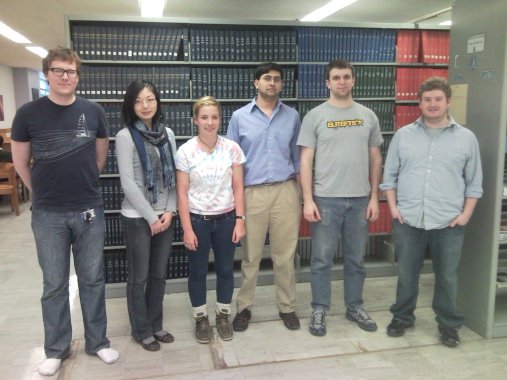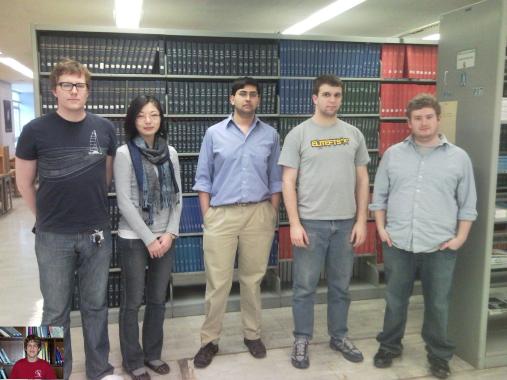SPS Receives Two Grants
The Rochester chapter of the Society of Physics Students received two grants: a Sigma Pi Sigma Undergraduate Research Award and a Marsh White award.
 Society of Physics Students Laser Harp (SLasH)
Society of Physics Students Laser Harp (SLasH)
This project is funded by the Sigma Pi Sigma Undergraduate Research Award. The students involved in the SLasH project are shown in the image on the right. The SPS will design and construct a robotic laser harp. In a laser harp, the system responds with a musical note, analogous to plucking a harp string, when a laser beam is blocked. The laser harp uses photosensors or switches to convert light energy into current or voltage. This project is a joint effort between the SPS, the Optics Students Association (OSA), and the Robotics Team of the University of Rochester. The project is scheduled to be completed by the end of the 2011 calender year. After construction is completed, the SPS hopes to tune the harp and demonstrate it at cultural events, such as ArtAwake, in the Greater Rochester Area. Through this project, the SPS hopes to embrace the Greater Rochester Area to promote the understanding of science and physics by coalescing it with elements of art and culture.
 Rochester Education Physics Outreach Program (REPOP)
Rochester Education Physics Outreach Program (REPOP)
This project was funded by the Marsh White award. These awards are made "to support projects designed to promote interest in physics among students and the general public." The students involved in the REPOP project are shown in the image on the right. The "Physics Suitcase" was developed to bring physics to local middle school students in a manner which is engaging and highlights the "cool" aspects of different fields of physics. The kit will contain an air-cushion hovercraft to demonstrate mechanics and thermodynamics, an electromagnet to demonstrate electromagnetism and simple circuits, a set of lenses and lasers to demonstrate reflection and refraction, a rotating platform to demonstrate mechanics related to angular momentum, and a monocular to project sunspots to demonstrate astronomy. This project will result in increased partnerships between the university physics community and local public school system, inspiring young learners to view science and math in a more positive light.
